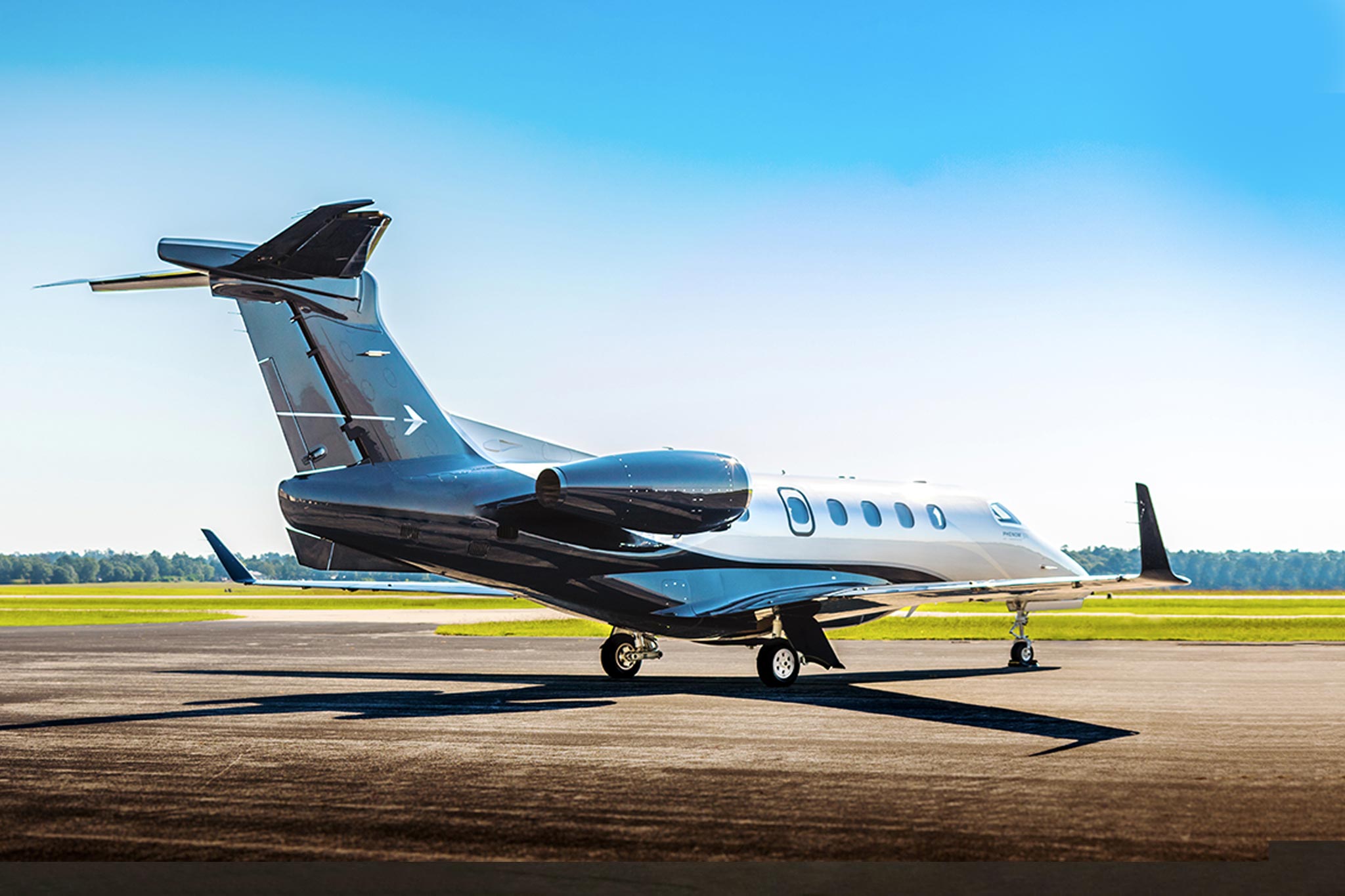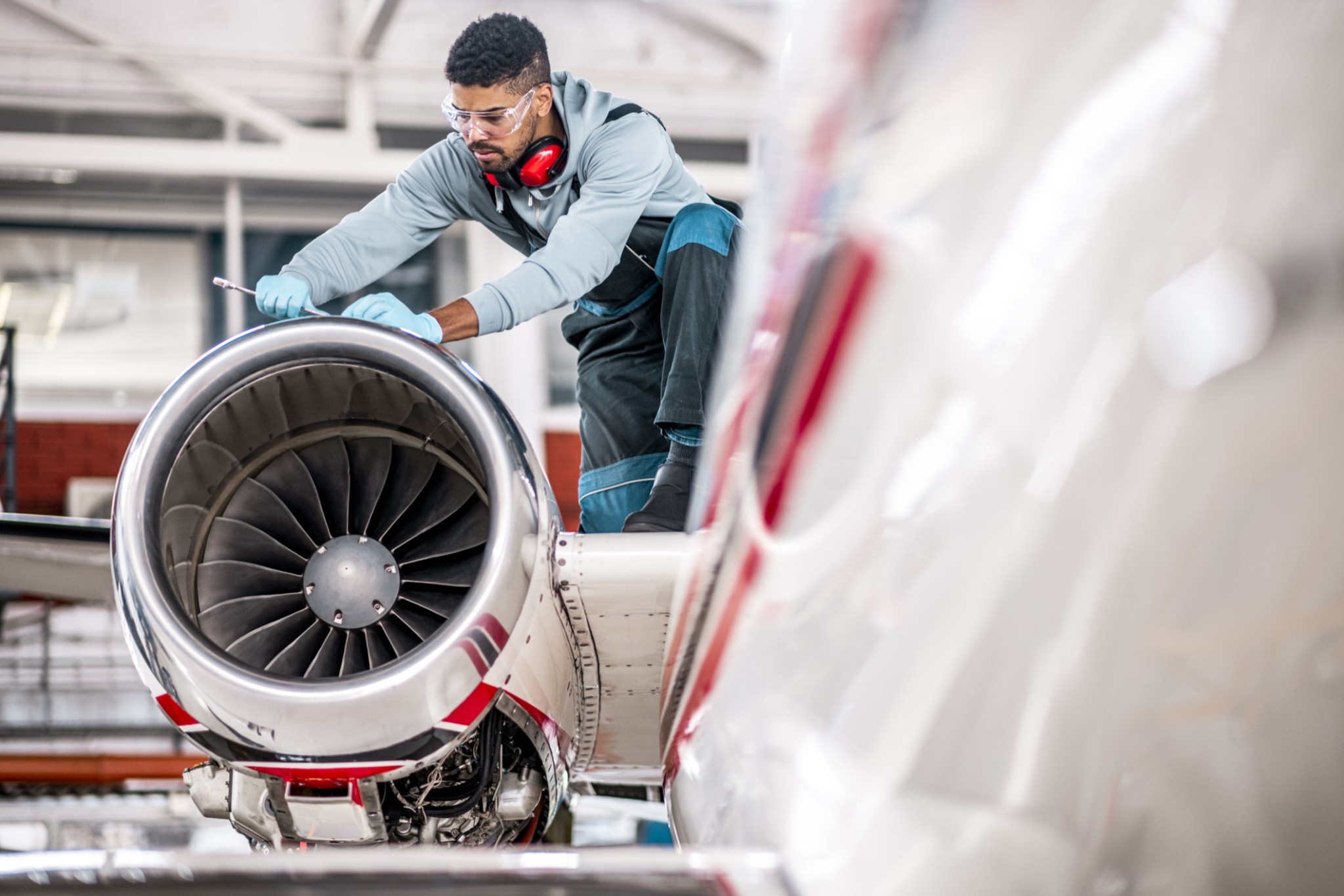
Airborne WiFi Options: Cliff Notes for Aircraft Owners
Date
April 19, 2024Author
Kandi Spangler, Managing DirectorMark your calendars for early 2026. The clock has started ticking and any aircraft with the Gogo ATG (air-to-ground) 1000, 2000, 4000 or 5000 WiFi systems will no longer have a working internet system. Even though we have roughly 2 years until the deadline, several of my clients have started the tedious task of figuring out what options are available and what solution is best for their particular aircraft and mission. I am assuming they’re not alone so I set out to find some answers and suddenly found myself going down the rabbit hole. In short, this is not an easy answer, but I will share with you what I learned as you start down this road.
“…in early 2026, the current network will be shut down and the LTE network will go live and, at that time, anyone with a legacy ATG system who hasn’t upgraded to AVANCE will lose their Gogo connectivity.” – Gogo Business Aviation
You already likely know that Gogo has been offering the upgraded L3 and L5 AVANCE systems for many years and customers seem to love it. But what you may not know is that the company also recently announced the debut of their GoGo Galileo global broadband system, rounding out their network migration to LTE (long-term evolution) technology enabling them to ultimately phase-out their legacy ATG systems in early 2024. So, for those of you who have already upgraded to L3 or L5, you’re safe. But for the thousands of airplanes that are equipped with the legacy ATG system, now is the time to act because in approximately 24 months, the ATG system will be turned off and upgrade incentives will likely be gone.
So what exactly are your options? Well, Gogo used to be the only real game in town unless you went to a more costly satellite provider used primarily by larger flight departments and transcontinental aircraft flying all over the world. Today, you have more choices.
WiFi Options for Business Aircraft Today
GoGo Business Aviation
GoGo Business Aviation is an obvious solution and they’ve provided consistent, reliable WiFi service to its thousands of customers for nearly three decades. The two solutions currently offered by GoGo are the AVANCE L3 and L5 systems. One of the major milestones GoGo accomplished with this system is its ability to handle system updates and upgrades over-the-air and without the need for hardware replacements. And if you already have L3 or L5, you’re already halfway towards the installed equipment needed to access their upcoming Galileo global broadband system. Only an antenna and other minor hardware upgrades will be needed to complete the Galileo installation, which is not yet available but coming soon.
Using the AVANCE hardware and Galileo antenna, GoGo will become the only provider utilizing both ATG and a Low Earth Orbit (“LEO”) satellite network (similar to Starlink) to provide seamless WiFi connectivity no matter where you are in the world.
But there are other options.
SmartSky
Founded in 2011, SmartSky’s flagship system is based on ATG technology that is now capable of 5G service. The company claims 20x more data capability than other ATG systems using 60MHz of capacity in the unlicensed spectrum. The hardware, consisting of an aircraft based radio, router and two installed antennas, is limited to service over the contiguous United States however. A good option for small to mid-size cabin aircraft, but not a great option for larger business aircraft traveling outside of the U.S.. I have little experience with SmartSky, as they have not seemed to gain popularity amongst business aviation users.
Viasat
Viasat (who bought Inmarsat in 2023) provides global, Ka-band satellite connectivity around the globe, as well as Ku-band communications through Inmarsat and their legacy Viasat systems. Like GoGo, Viasat seems to be focused on developing equipment that won’t so easily become obsolete, touting hardware that can be easily switched from lower-speed Ku-band connectivity, to the faster Ka-band system. Incidentally, Viasat announced a similar end-of-life for the Ku-band technology and will no longer support it as of January 2026. Ku-band will continue being supported under the Inmarsat umbrella, and will be used more for cockpit communications which require higher reliability than speed. Keep in mind, Viasat uses Geo-Stationary (“GEO”) satellite technology, which means it is more expensive than ATG when operating over the contiguous U.S..
A word on Ku vs. Ka-band: Ku-band operates on a completely different frequency band than Ka-band. Ka-band can support data speeds that are much higher than Ku-band. However, Ka-band is far more affected by earth and space weather (solar flares, snow, rain, etc.).
Iridium
Like Viasat, Iridium is a satellite-based data and communication network, except it uses LEO satellites providing stronger signals, faster connections (since they are physically closer to the airplane) and are able to use smaller antennas. Utilizing L-band technology, communications through Iridium are reliable even when earth or space weather is present, making it a great option for both passenger WiFi communications needs and cockpit connectivity requirements. Still, it is a satellite-based system, meaning it is traditionally much more expensive than ATG WiFi.
Honeywell and Satcom Direct Hardware
Both Honeywell and Satcom Direct offer hardware solutions (mainly antennas) that allow for access to Iridium, Viasat and Inmarsat (and other) satellite-based data and communication services. While they do not provide the service themselves, they are resellers of these services in addition to providing hardware solutions as well.
Starlink
Here’s the option we’re all hearing so much about today. Starlink utilizes a LEO satellite system to provide more data at higher speeds using a relatively smaller antenna than GEO antennas. It’s not available on every model of business jet yet, however. And while people love the service from their boat or remote hunting camp, it’s important to realize they have virtually no support network if it quits working, versus GoGo who has robust support.
RECOMMENDATION
So I still haven’t answered your question: which one should you get? The answer is… it depends. I highly recommend talking with an expert to determine the right solution for you. Not only will they ask you how you plan to use the service, where you’re flying and what your budget is, but they’ll also take into account what legacy systems you may already have installed on the airplane. You see, while technology may be requiring you to upgrade, you may be able to use your current antenna, wiring or coaxial cable already installed on your particular airplane. In the meantime, here are some other considerations you should start thinking about.
Large cabin vs Small cabin: In the case of required hardware, this is where size really does matter. Generally speaking, ATG systems require smaller antennas, LEO antennas are larger and GEO antennas are the largest. And while a GEO antenna may not look too ridiculous on a G550, it would on a PC-12. In fact, it may be structurally impossible to mount some of these antennas on smaller aircraft. So consider the size of the airplane for the size of the antenna.
Where are you flying: In a nutshell, ATG works over the contiguous U.S., while Satellite-based communications work worldwide. But that’s really over-simplifying things. What if you’re flying from Miami to New York and you’re actually flying off the east coast for an extended period? ATG will likely not work for part of that trip. Same goes for the Caribbean, Mexico and parts of Canada. Then there’s the long-haul trip considerations of a flight taking you over one of the poles. GEO satellite systems may lose coverage there too. Additionally, GEO satellite aircraft antennas utilize “steered antennas” because they must be aimed at 1 of only 3 satellites available in the line-of-sight required for connectivity. When one satellite goes out of range, you’ll likely lose connectivity for that period of time the antenna is being “steered” towards another satellite, which is often on the opposite horizon. LEO satellites are plentiful and travel over the poles, so loss of connectivity is minimal, providing the best, continuous coverage around the world.
Cockpit vs. Cabin: Connectivity requirements for the crew are often very different than passenger requirements – and we’re not just talking about WiFi here. So one size may not fit all. Up front, Ku-band may be preferred since it is not affected by earth and space weather. In the back of the airplane however, Ka-band may be preferred because of its speed. I haven’t even learned about L-band yet, but it’s out there and another option for data transmission. So while this article is mainly about WiFi, you may still need to consider these other options in addition to a WiFi option to be fully equipped for your missions.
Data TO the Airplane vs. Data FROM the Airplane: Lastly, it’s important to understand how much bandwidth and speed you need leaving from the airplane (often referred to as the “return link”). All this talk of speed and megabytes per second (Mbps) by the different providers is honestly more than most of us will ever need for incoming data. But if you plan to hold video conference calls, your “return link” needs to be at least 2-3 Mbps from the airplane in order to work smoothly. So streaming services may not be an issue for some services, but a Zoom call would be.
A Word on Spoofing
If you’re traveling around the world (particularly over Turkey), your crew also needs to be aware of GPS “spoofing” which sends the airplane fake GSP satellite signals to make the airplane think it’s somewhere else. There are ways to identify spoofing when it happens, but crews need to understand what it is, how to identify it and how to deal with it.
STOP GAP
Have a legacy GoGo ATG system that’s about to become as useful as a boat anchor? Here’s what you do: get yourself scheduled for an AVANCE 3 upgrade and take advantage of the $50,000 rebate available through GoGo. Do not however, have the installation facility change out the antenna, wiring or coaxial cable unless it’s necessary. The ATG antenna will actually still work with the AVANCE L3 system! Then, when the Galileo hardware comes out (which is mainly an antenna install), replace the antenna. The initial AVANCE install should cost between $90-125K with the rebate (no antenna). Then install the Galileo when it comes out and give yourself worldwide coverage at amazing speeds, unmatched reliability and uninterrupted service.
Don’t have a GoGo ATG system installed and you want worldwide coverage? Then you have a harder decision on your hands. Both the Starlink and the GoGo Galileo systems are fantastic options. The cost of installation and the monthly service fees are comparable, however, GoGo is backed by a robust support system.
CONCLUSION
Please don’t make a decision based on this article. I am but a mere aircraft broker who thought it would be fun to write a simple article on the GoGo ATG system shutdown. 12 days and 50 cups of coffee later, I decided it was too much to capture in one article as I continued talking to friends and colleagues as I went further down the rabbit hole. I’ve only scratched the surface and I feel like my head is going to explode.
For those of you looking to get educated, I’d like to offer a piece of advice: Find a trusted source who knows this stuff inside-out and tell them your mission and budget and what model aircraft you fly. Armed with a little information and some budgetary guidance, they’ll find the perfect solution for you. For me, I found that person when I finally called Jeff Shaw at ProStar Aviation in Manchester, NH. This guy is about as knowledgeable and unbiased as they come. Give him a call at (603) 845-9235 or email him at [email protected]. And please don’t mention my name or he’ll never take my calls again. <smile>



